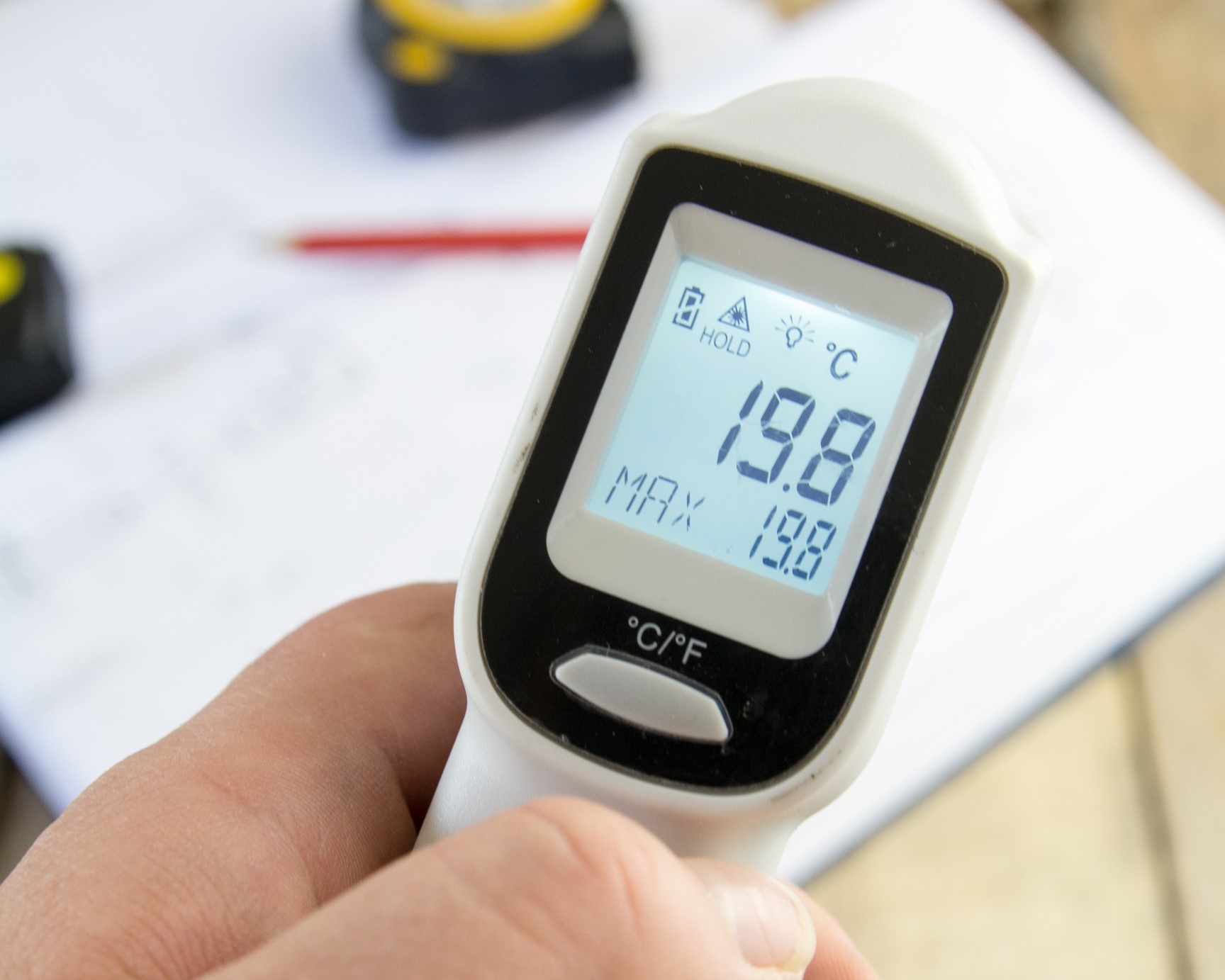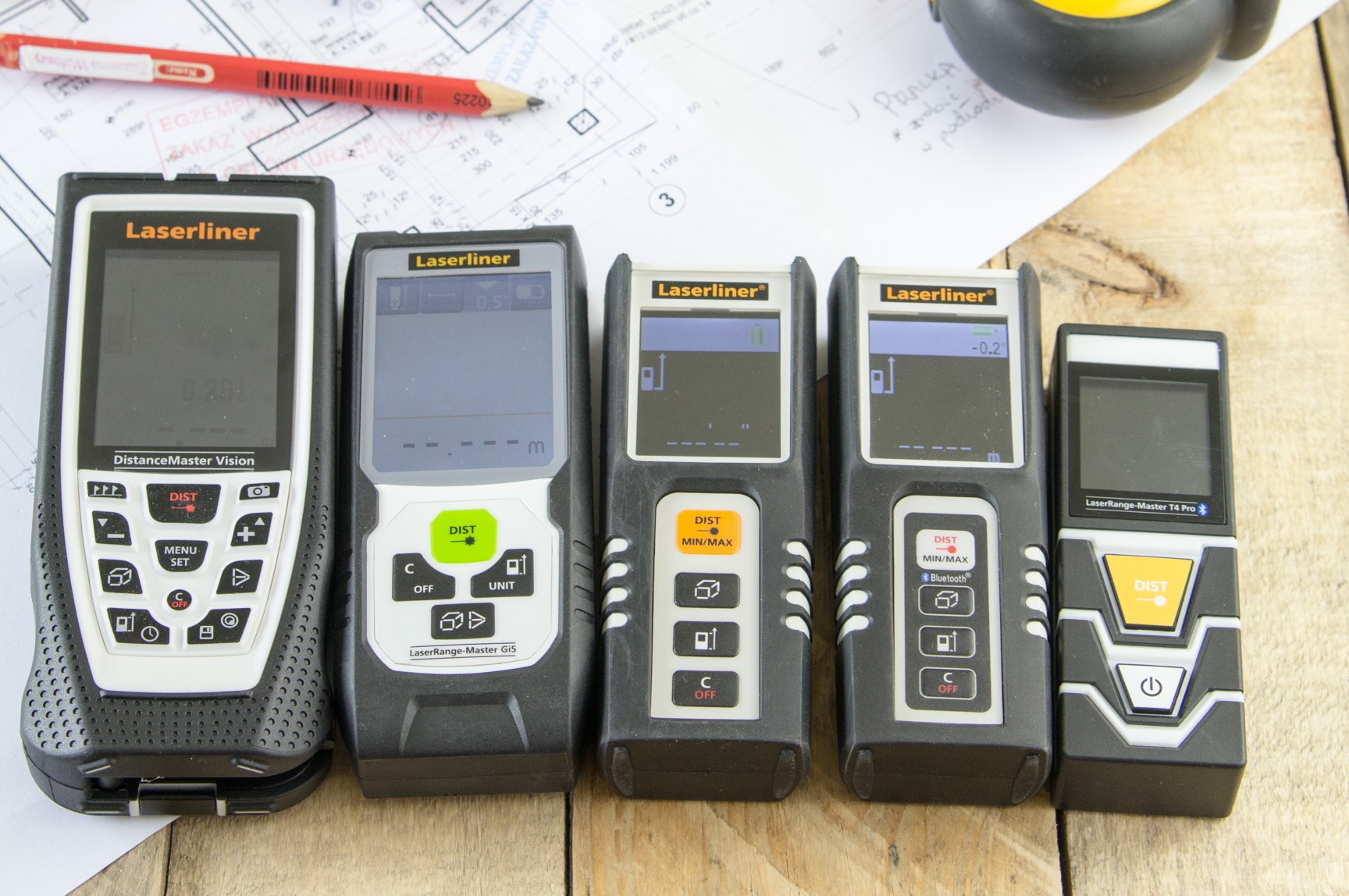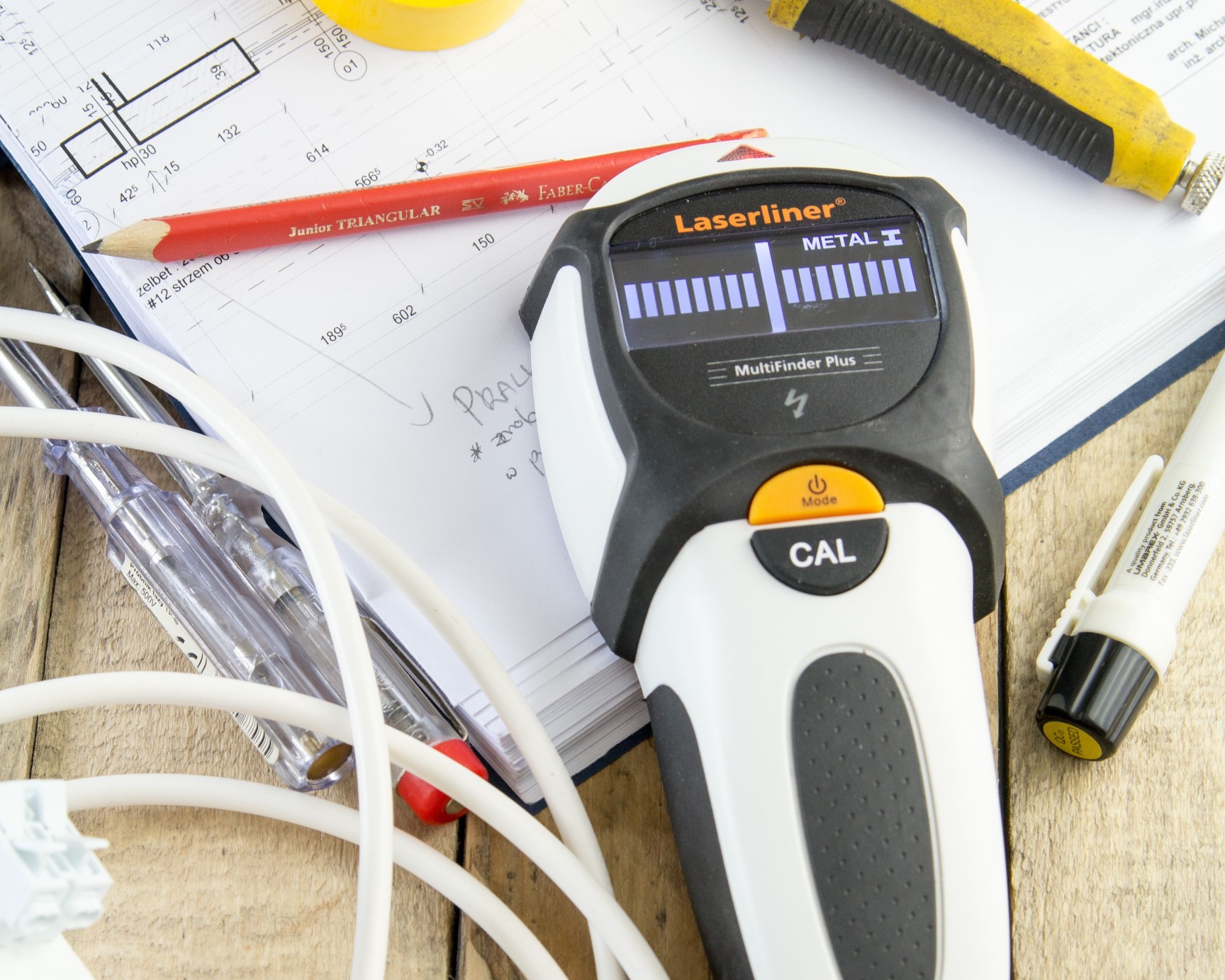Essential Tools For Efficient Home Inspection: A Comprehensive Guide
Posted by Philip Hanrahan B.E., B.A., M.I.E.I. on 22nd Sep 2021
Welcome to our comprehensive guide on home inspection tools! At Hitechniques, we understand that a thorough home inspection is crucial, whether you're a professional inspector, a homeowner checking for maintenance needs, or a potential buyer evaluating a property. The key to a successful inspection lies not just in the skills and knowledge of the inspector but also in the quality and reliability of the tools used.
In this guide, we're excited to delve into the top tools that are indispensable for any home inspection. These tools are not just gadgets; they are your partners in uncovering the true details about a property. From detecting hidden moisture that could indicate mould growth to ensuring electrical safety, these tools help you paint a complete and accurate picture of a home's condition.
Our years of experience in the field have shown us that the right tools can make all the difference. They not only make the inspection process more efficient but also provide peace of mind to homeowners and buyers by revealing the unseen and helping to prevent future problems.
In the following sections, we will explore each of the essential tools in detail. We'll share insights on how to use them effectively, what features to look for, and how they can save you time and money in the long run. Whether you're a seasoned inspector or a DIY enthusiast, this guide is designed to equip you with the knowledge and tools you need for thorough and effective home inspections.
1. Moisture Meters: Uncovering Hidden Dampness

n the realm of home inspections, one of the most critical challenges is detecting hidden moisture, a potential precursor to a host of issues including mould growth, structural damage, and poor air quality. This is where moisture metres come into play, serving as an indispensable tool in the home inspector's arsenal.
Understanding Moisture Metres
Moisture metres are sophisticated devices designed to measure the moisture content in various building materials, including wood, plaster, concrete, and drywall. They come in two primary types: pin-type and pinless. Pin-type metres use two small electrodes to penetrate the material, measuring the electrical resistance between these points, which changes with moisture content. Pinless metres, on the other hand, use electromagnetic signals to detect moisture without causing any damage to the surfaces.
Effective Usage of Moisture Metres
To get the most accurate readings, it's essential to understand the settings and capabilities of your moisture metre. Most metres come with settings tailored for different materials, such as softwood, hardwood, drywall, and masonry. Selecting the correct setting is crucial for reliable measurements.
When using a pin-type metre, ensure the pins are inserted fully and perpendicular to the surface for the best contact. For pinless metres, ensure full surface contact without any gaps or air pockets. It's important to note that metal components within walls can affect readings, so be aware of potential false positives.
Interpreting the Readings
Moisture metres typically provide readings as a percentage of moisture content. As a rule of thumb, a reading below 10% in most building materials is considered safe, whereas readings above 20% indicate significant moisture and potential for damage or mould growth. However, these thresholds can vary depending on the material and environmental conditions.
Common Applications
Moisture metres are invaluable in identifying hidden leaks, whether from plumbing, roofs, or windows. They can also help in assessing flood damage, tracking the drying process, and pinpointing areas at risk of mould growth. For homebuyers, these tools can reveal problems that might not be visible to the naked eye, potentially saving thousands in future repair costs.
At Hitechniques, we believe that a moisture metre is a must-have tool for any thorough home inspection. It empowers inspectors and homeowners alike to detect and address moisture issues before they escalate into more significant problems.
2. Non-Contact Voltage Testers: Ensuring Electrical Safety
Electrical safety is a paramount concern during any home inspection. Identifying live wires and potential electrical hazards is not just a matter of thoroughness but of ensuring safety. This is where non-contact voltage testers become an essential tool in the home inspector's kit.
The Role of Non-Contact Voltage Testers
Non-contact voltage testers are designed to detect electrical voltage in cables, cords, circuit breakers, lighting fixtures, switches, outlets, and wires. A significant advantage of these testers is their ability to detect voltage without needing direct contact with the conductor, hence the name 'non-contact'. This feature makes them an invaluable tool for quickly checking if a wire is live without the risk of direct electrical contact.
How to Use Non-Contact Voltage Testers
Using a non-contact voltage tester is straightforward. Simply bring the tester close to the object or wire you wish to test. If the tester lights up or beeps, it indicates the presence of electrical voltage. It's a quick, non-invasive way to ascertain whether electrical circuits are live, which is crucial before any repair work or further inspection.
Safety First
While non-contact voltage testers are incredibly useful, they should be used as part of a comprehensive approach to electrical safety. Always ensure that the tester is functioning correctly by testing it on a known live source before use. Remember, these testers are an aid to safety, not a replacement for proper electrical knowledge and precautions.
Practical Applications in Home Inspections
In home inspections, non-contact voltage testers are used for a variety of tasks:
- Checking for live wires before handling or inspecting electrical components.
- Identifying potentially unsafe wiring, especially in older homes.
- Verifying power supply to outlets and fixtures.
- Detecting opened spliced wiring or older wiring that may no longer be active.
At Hitechniques, we consider the non-contact voltage tester an essential tool for any home inspector or DIY enthusiast working on home maintenance. It offers a quick, safe, and non-invasive way to check for live electrical components, contributing significantly to the overall safety of the inspection process.
3. Thermometers and Infrared Cameras: Precision Temperature Measurement

In the intricate process of home inspection, assessing temperature variations plays a crucial role, especially in evaluating HVAC systems, insulation efficiency, and potential moisture areas. This is where thermometers and infrared (IR) cameras become indispensable tools, offering precision and depth in temperature measurement and analysis.
Thermometers in Home Inspection
Thermometers used in home inspections range from simple probe types to sophisticated digital readout models. They serve various purposes:
- HVAC Efficiency: By measuring air temperature at supply and return vents, thermometers help assess the efficiency of heating and cooling systems.
- Water Temperature Checks: They are used to verify domestic hot water temperatures, ensuring they are within safe and efficient ranges.
- Spot Checks: Simple probe thermometers can quickly check surface temperatures around windows and doors to identify insulation issues.
Infrared Cameras: A Deeper Look
Infrared cameras take temperature assessment to the next level. These cameras don't just measure temperature; they visualise it, providing a thermal image that reveals variations in heat across surfaces. This capability is invaluable in several scenarios:
- Insulation Checks: IR cameras can detect areas in walls or ceilings where insulation may be missing or inadequate, a task nearly impossible with traditional inspection methods.
- Moisture Detection: By identifying cooler areas on surfaces, IR cameras can pinpoint potential moisture locations, which are often cooler than their surroundings.
- Electrical Inspections: Overheating electrical components can be easily spotted with an IR camera, highlighting potential fire hazards.
Using IR Cameras Effectively
To get the most out of an IR camera, it's important to understand its capabilities and limitations. For instance, reflective surfaces can give misleading readings, and temperature differences need to be interpreted in the context of the surrounding environment. A thorough understanding of thermal imaging principles is essential for accurate interpretation of IR camera data.
At Hitechniques, we believe that thermometers and infrared cameras are vital for a modern, thorough home inspection. They provide not just data, but insights into the hidden aspects of a property, from insulation quality to unseen moisture.
4. Video Inspection Sets: Navigating Pipes and Hidden Spaces
One of the most challenging aspects of home inspections is examining areas that are out of sight, such as inside pipes, behind walls, or under floors. This is where video inspection sets become invaluable. At Hitechniques, we recognise the importance of these advanced tools in providing a comprehensive view of a property's hidden aspects.
Exploring the Unseen with Video Inspection Sets
Video inspection sets typically consist of a small camera mounted on a flexible cable, which transmits live images to a monitor. This setup allows inspectors to navigate through narrow and winding spaces, offering a clear view of internal conditions without the need for invasive and potentially damaging exploration.
Applications in Home Inspections
The versatility of video inspection sets makes them essential for a variety of inspection tasks:
- Plumbing Inspections: They are ideal for examining the interior of pipes, helping to identify blockages, leaks, corrosion, or damage in plumbing systems.
- Checking for Structural Issues: Video inspection sets can be used to look inside walls or under floors, aiding in the detection of structural problems, pest infestations, or hidden water damage.
- HVAC System Checks: These tools can also be used to inspect ductwork and other components of HVAC systems, ensuring they are clear and functioning properly.
Best Practices for Using Video Inspection Sets
To maximise the effectiveness of video inspection sets, it's important to:
- Navigate Carefully: Manoeuvre the camera slowly and steadily to get clear and stable images.
- Pay Attention to Details: Look for signs of damage, wear, or other issues that might not be immediately obvious.
- Document Findings: Capture images or videos of critical findings for reference and to include in inspection reports.
Video inspection sets are a game-changer in the field of home inspection, allowing us to see beyond the surface and identify potential problems before they become major issues. They epitomise our commitment at Hitechniques to thorough, non-invasive inspections.
5: Additional Essential Tools: Enhancing Inspection Efficiency
While moisture metres, non-contact voltage testers, thermometers, infrared cameras, and video inspection sets are key players in our home inspection toolkit, there are additional tools that play a vital role in ensuring a thorough and efficient inspection process. At Hitechniques, we advocate for a well-rounded toolkit that addresses a wide range of inspection needs.
Laser Distance Metres

Laser distance metres are indispensable for quick and accurate measurements of room sizes, window heights, and other spatial dimensions. They are far more efficient than traditional tape measures, providing instant readings with a high degree of accuracy. These measurements are crucial for verifying floor plans, calculating square footage, and assessing room proportions.
Digital Levels and Angle Finders
Ensuring that surfaces are level and angles are correct is a fundamental aspect of home inspection. Digital levels and angle finders offer precision in assessing the alignment of walls, floors, and other structural elements. They are particularly useful in older homes where settling may have caused misalignments.
Thermal Leak Detectors
Thermal leak detectors are a simpler alternative to infrared cameras for identifying areas of heat loss around windows, doors, and other potential leak points. They are instrumental in pinpointing areas where insulation may be inadequate or compromised, contributing to energy inefficiency.
Gas Leak Detectors
For inspections involving gas lines, a gas leak detector is a critical safety tool. It helps in identifying leaks in gas pipes, fittings, and appliances, ensuring the safety of the occupants and preventing potential hazards.
Sound Level Metres
In certain inspection scenarios, measuring sound levels can be important, especially in areas where noise pollution is a concern. Sound level metres help assess the effectiveness of soundproofing and the impact of external noise sources on the living environment.
These additional tools complement our primary inspection instruments, together forming a comprehensive toolkit that addresses the diverse aspects of home inspection. At Hitechniques, we believe in equipping our inspectors with the best tools available, ensuring that every inspection is thorough, accurate, and efficient.
Practical Tips for Home Inspectors and DIY Enthusiasts

At Hitechniques, we understand that having the right tools is just the first step in conducting effective home inspections. How these tools are used is equally important. Whether you're a professional home inspector or a DIY enthusiast, here are some practical tips to maximise the effectiveness of your home inspection toolkit.
Familiarise Yourself with Your Tools
Before heading out for an inspection, make sure you are well-acquainted with each tool in your kit. Understand their functions, limitations, and the correct way to operate them. This knowledge not only improves the accuracy of your inspections but also ensures your safety and the safety of the property.
Regular Calibration and Maintenance
To ensure your tools provide accurate readings, regularly calibrate them and perform routine maintenance checks. This is especially important for digital devices like moisture metres, IR cameras, and laser distance metres. Keeping your tools in top condition is crucial for reliable inspections.
Document Your Findings Thoroughly
During an inspection, document your findings meticulously. Use the video and photographic capabilities of your tools to capture evidence of any issues you uncover. These records are invaluable for creating detailed inspection reports and can be crucial for future reference or legal documentation.
Combine Tools for Comprehensive Assessments
Often, the best insights come from using multiple tools in conjunction. For example, use a moisture metre to detect dampness and then an IR camera to further investigate the extent and source of the moisture. This layered approach leads to more thorough and accurate inspections.
Stay Informed on Latest Trends and Technologies
The field of home inspection is continually evolving, with new tools and technologies emerging regularly. Stay updated on the latest trends and consider incorporating new tools into your kit as they become available. Continuous learning is key to being an effective inspector.
Practice Safety First
Always prioritise safety, both for yourself and the property you're inspecting. Understand the safety protocols for each tool, especially when dealing with electricity, heights, or potentially hazardous materials. Your well-being is paramount during any inspection.
Effective home inspection is a blend of the right tools, knowledge, and practical application. By following these tips, both professional inspectors and DIY enthusiasts can conduct thorough, accurate, and safe home inspections. At Hitechniques, we are committed to providing not just the tools, but also the knowledge and support you need to excel in your inspection endeavours.
Conclusion: Empowering Inspections with the Right Tools
As we reach the end of our guide, it's crucial to underscore the significant role that the right tools play in enhancing home inspections. At Hitechniques, our commitment extends beyond just supplying these tools; we focus on empowering our clients with the knowledge and skills necessary for their optimal use.
Throughout this guide, we've explored a variety of essential tools that are indispensable in the field of home inspection. From moisture metres that detect hidden dampness to non-contact voltage testers ensuring electrical safety, each tool serves a specific and vital purpose. Thermometers and infrared cameras offer precision in temperature measurement, revealing issues not visible to the naked eye. Video inspection sets allow inspectors to navigate otherwise inaccessible areas, and additional tools like laser distance metres and gas leak detectors further augment the inspector's ability to conduct thorough evaluations.
Our dedication at Hitechniques is twofold: providing high-quality, reliable tools and ensuring our clients are well-equipped with the necessary training and support. We recognise that the effectiveness of these tools is maximised when used correctly.
The home inspection industry is dynamic, with continuous advancements in technology and methodology. Hitechniques is committed to staying updated with these developments, offering the latest tools and information to our clients. We encourage a mindset of ongoing learning and adaptation, which is essential for achieving excellence in home inspections. Remember, thorough home inspections are key to not only understanding a property's condition but also ensuring its safety and longevity.
---
For any further advice, training, or inquiries about our products, please feel free to contact us. We are here to support you in all your home inspection needs.







